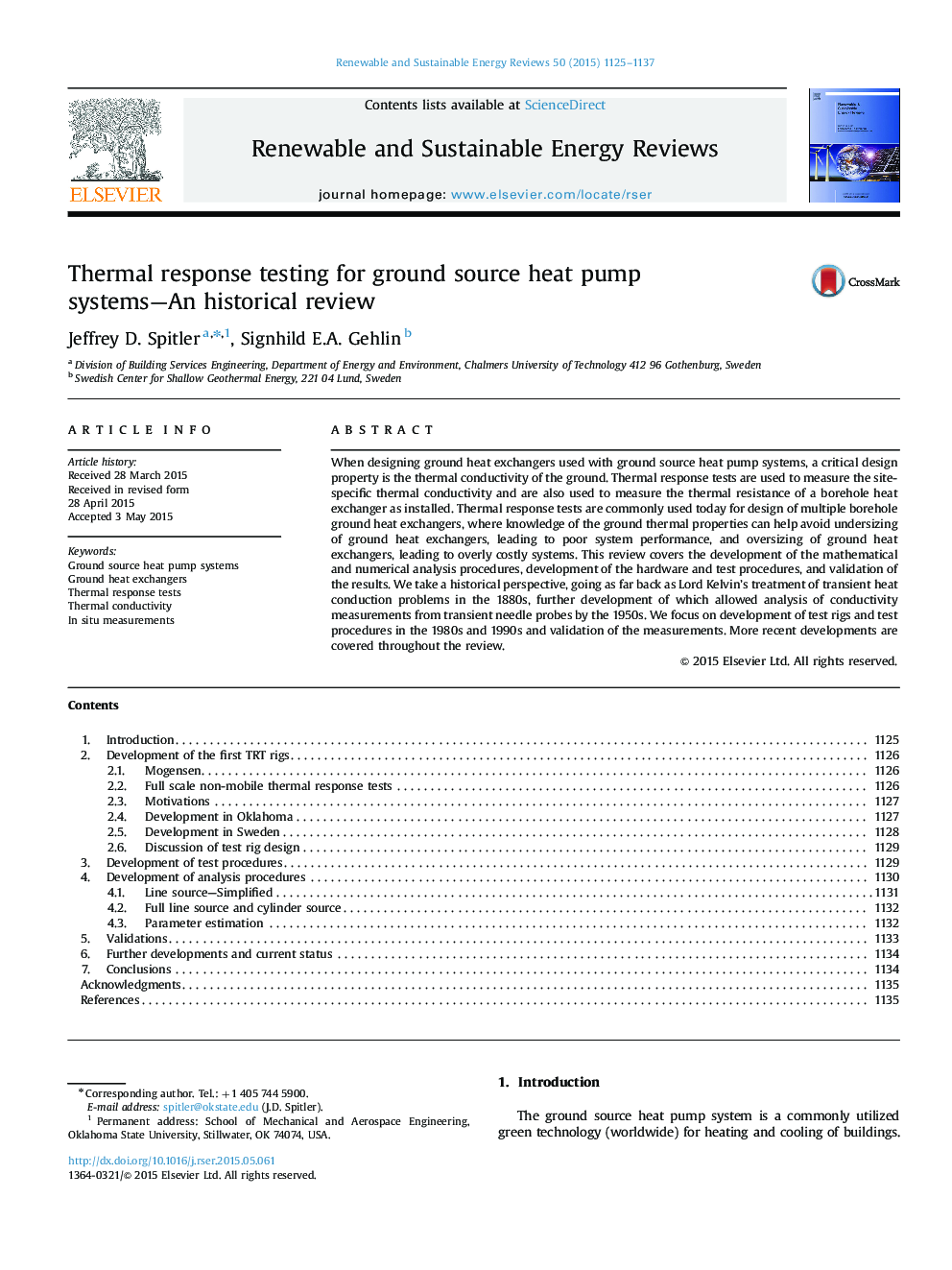| کد مقاله | کد نشریه | سال انتشار | مقاله انگلیسی | نسخه تمام متن |
|---|---|---|---|---|
| 8116300 | 1522335 | 2015 | 13 صفحه PDF | دانلود رایگان |
عنوان انگلیسی مقاله ISI
Thermal response testing for ground source heat pump systems-An historical review
ترجمه فارسی عنوان
تست پاسخ حرارت برای سیستم های پمپ حرارتی زمین - یک بررسی تاریخی
دانلود مقاله + سفارش ترجمه
دانلود مقاله ISI انگلیسی
رایگان برای ایرانیان
کلمات کلیدی
سیستم های پمپ گرمای زمین منبع، مبدل های حرارتی زمین، آزمایش های پاسخ حرارتی، هدایت حرارتی، اندازه گیری در محل،
ترجمه چکیده
هنگام طراحی مبدل های حرارتی زمین استفاده شده با سیستم های پمپ گرمایی زمین، یک ویژگی مهم طراحی، هدایت حرارتی زمین است. تست های پاسخ حرارتی برای اندازه گیری هدایت حرارتی خاص سایت استفاده می شود و همچنین برای اندازه گیری مقاومت حرارتی مبدل حرارتی گمانه به عنوان نصب شده استفاده می شود. تست های پاسخ گرمائی امروزه برای طراحی مبدل های مبدل حرارتی چندشب چندگانه استفاده می شود، در حالیکه دانش از ویژگی های حرارتی زمین می تواند به جلوگیری از کاهش مبدلهای حرارتی زمین منجر شود، به دلیل عملکرد ضعیف سیستم و غلبه بر مبدل های حرارتی زمین، منجر به سیستم های بیش از حد پر هزینه . این بررسی شامل توسعه رویه های تجزیه و تحلیل ریاضی و عددی، توسعه سخت افزار و روش های تست و اعتبار سنجی نتایج است. ما یک دیدگاه تاریخی داریم که در دهه 1880 درمان لیدر کلوین از مشکلات انتقال حرارت در طول دوره را ادامه می دهد، توسعه ای که تحلیلی از اندازه گیری هدایت از پروب های سوزن گذرا تا دهه 1950 به دست می دهد. ما در توسعه تست ها و مراحل آزمایش در دهه های 1980 و 1990 تمرکز می کنیم و اعتبار سنجی ها را ارزیابی می کنیم. تحولات اخیر بیشتر در طول بررسی بررسی شده است.
موضوعات مرتبط
مهندسی و علوم پایه
مهندسی انرژی
انرژی های تجدید پذیر، توسعه پایدار و محیط زیست
چکیده انگلیسی
When designing ground heat exchangers used with ground source heat pump systems, a critical design property is the thermal conductivity of the ground. Thermal response tests are used to measure the site-specific thermal conductivity and are also used to measure the thermal resistance of a borehole heat exchanger as installed. Thermal response tests are commonly used today for design of multiple borehole ground heat exchangers, where knowledge of the ground thermal properties can help avoid undersizing of ground heat exchangers, leading to poor system performance, and oversizing of ground heat exchangers, leading to overly costly systems. This review covers the development of the mathematical and numerical analysis procedures, development of the hardware and test procedures, and validation of the results. We take a historical perspective, going as far back as Lord Kelvin's treatment of transient heat conduction problems in the 1880s, further development of which allowed analysis of conductivity measurements from transient needle probes by the 1950s. We focus on development of test rigs and test procedures in the 1980s and 1990s and validation of the measurements. More recent developments are covered throughout the review.
ناشر
Database: Elsevier - ScienceDirect (ساینس دایرکت)
Journal: Renewable and Sustainable Energy Reviews - Volume 50, October 2015, Pages 1125-1137
Journal: Renewable and Sustainable Energy Reviews - Volume 50, October 2015, Pages 1125-1137
نویسندگان
Jeffrey D. Spitler, Signhild E.A. Gehlin,
